Moment will also start sending you
our award-winning newsletters.
----------------------------------------------------------------
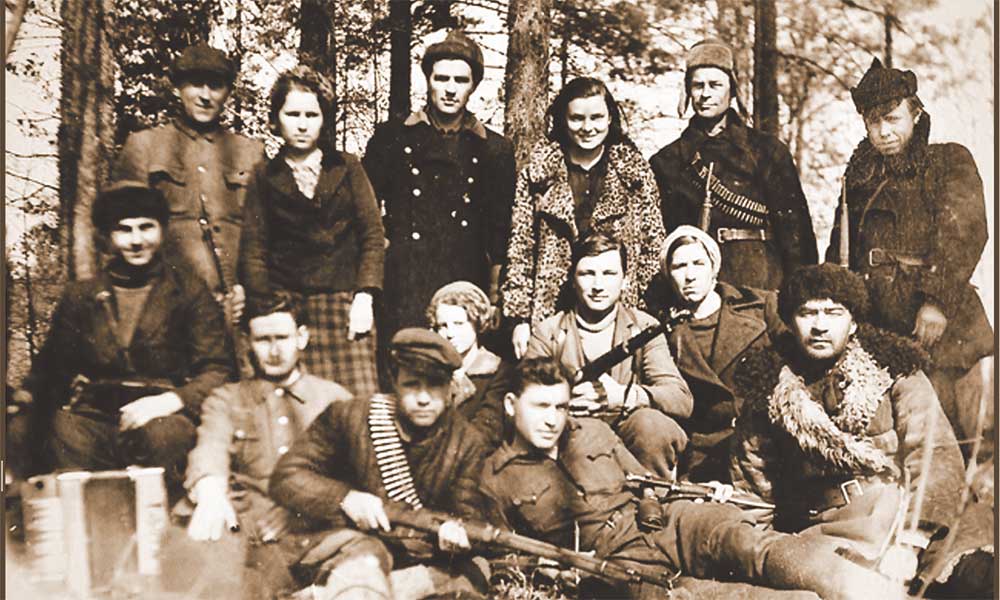
These are the words of Faye Schulman, who, at age 16 during World War II, fled to the forests outside her hometown of Lenin, Poland, after witnessing her entire family being executed by the Nazis. Schulman is one of the eight Jewish partisans who are featured in the recently released film Four Winters. This riveting first-hand narrative of heroism, resourcefulness and resistance gives voice to the more than 25,000 Jewish partisans who hid out in the forests of Eastern Europe and fought back against the Nazis and their collaborators.
“All I owned was my camera, leopard coat, rifle and a grenade, in case I’m captured,” says Schulman. “When it was time to be hugging a boyfriend, I was hugging a rifle.”
A photographer in her hometown before the war, Schulman wielded her camera as a weapon during her time in the forest. With an ammunition belt slung over the shoulder of her faux leopard coat, she recorded the actions and life of Jewish partisans and kept her images safe until the war’s end. Taken covertly and developed under a blanket in the dark of night, her images documented Jewish partisans’ efforts to disrupt the Nazi killing machine. As one of the only known Jewish partisan photographers, she left a vital record of those partisans’ determination to fight back. Using guerrilla tactics, these brigades blew up bridges, derailed trains, attacked armed enemy headquarters and smuggled Jews. Schulman not only took part in a number of those missions, she also served as a nurse and doctor’s aide, treating wounds and assisting in surgery.
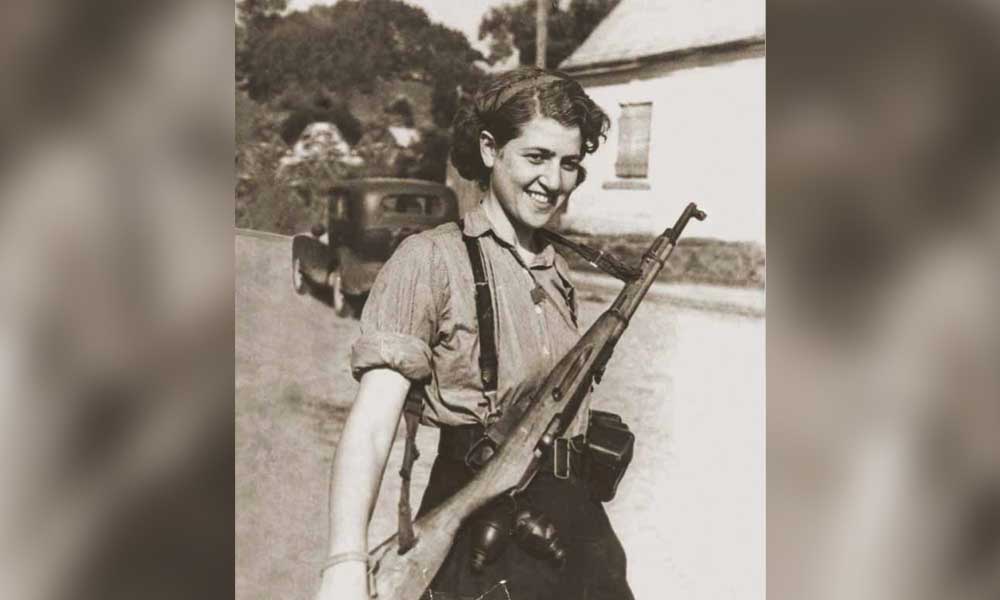
Sara Ginaite was part of a partisan military unit called “Death to the Occupiers. (Photo courtesy of New Moon Films)
A meld of first-person interviews, archival film footage and personal photographs, the film brings to life stories of fear, hunger and brutality, but also of courage, resilience and hope. A harrowing saga of survival, the film is alternately moving, horrifying, poignant and sometimes surprisingly funny. One of the women in the film, Gertrude Boyarski, from Derechin, Poland, talks about the partisans’ ongoing struggle to obtain food. Once, after not eating for some eight days, she found a pig’s head buried in the earth and cooked it up with
worm-infested potato “shells.” Now, she says, “I’m kosher.”
All from different regions, the eight partisans interviewed in the film were not together in the forests. They kept warm in winter by spreading ashes from their fires on the ground and covering them with blankets, on which they slept. They made dugouts in the earth and used branches to conceal them and provide shelter. They often had to walk up to 40 miles in search of food, sometimes eating bark and grass instead. They took pigs from locals, but not cows (beef doesn’t last, they explain—pork you can salt and it will keep). They spoke of eerie lights in the forest at night—the eyes of wolves.

Solitary partisan, ID unknown. (Photo courtesy of New Moon Films)
Living and fighting in the forests was a dramatic change for these young partisans, many barely in their teens and from closely knit Jewish families and communities. They had to figure out how to get guns, learn how to shoot and transform themselves into fierce partisan soldiers. “The courage, the bravery, it grows in you,” says Luba Abramowitz, who was from the town of Slonim in Belarus.
For more than two decades, documentary filmmaker Julia Mintz, who wrote and directed the film, collected stories. She began the project after coming upon a particularly compelling account. “I stumbled upon it in an alumni magazine,” she says. “I learned about this incredible young girl who dug herself into a ditch and blew up trains headed to the frontlines. And I was intrigued by that story. Then I found out that there were thousands and thousands—25,000 alone in the forests of Eastern Europe, Ukraine and Belarus—of Jewish partisans fighting to slow the Nazi advance. Once I learned about that, I set out to learn as much as I could, and to make this film.”
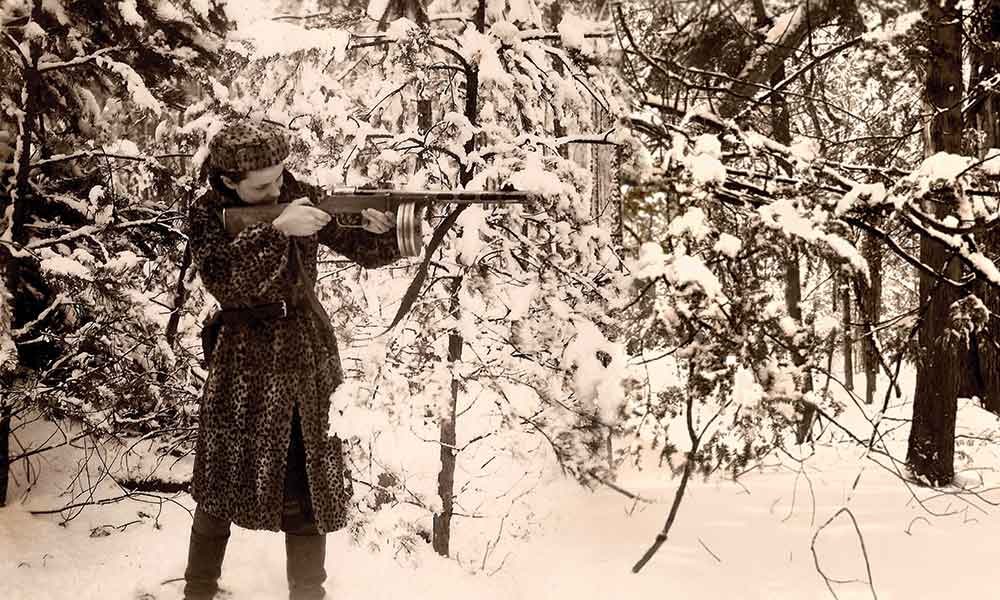
Faye Schulman takes aim. (Photo credit: Photo by Faye Schulman / Courtesy of New Moon Films)
“I asked everybody I knew if they knew of partisans,” Mintz explains. “I looked up the memoirs that existed. I interviewed scholars and about three dozen people who lived in the forests. There were historical accounts, books and films, but to really understand who the partisans were and what they experienced, I wanted
first-hand accounts and I knew I was in a race against time. The first interviews were shot a decade ago. The last interview was shot within the last five or so years. And then we went dark for two years because of COVID.”
“I sat with everyone,” she says, “sometimes for days, and they told me their stories. I became a vessel for their history.” She brought a flatbed scanner with her to scan all the images, documents, personal letters and memoirs her subjects shared with her. She traveled to Belarus, to Poland, to Lithuania, met with people there, and went to some very remote archives. Sometimes someone would say, “We know this person who has an image.” It was an international scouring, Mintz says, “of all the different spaces and places one might look.”
Michael Stoll, the only one of the eight partisans profiled in the film who is still alive, was from an
upper-middle-class family in Lida, Poland, a town that had nearly 7,000 Jews and a rich cultural life. His family spoke Yiddish and kept a kosher home. Stoll speaks in the film about people from his town coming to his house to listen to music on the radio and dance, and of going to the movies (Tarzan was his favorite). In the woods, he says, he lived like an animal. His need for revenge was overpowering. He killed in cold blood. “It was like the humanity walks out of you,” he says.
Loaded onto a cattle car headed for Treblinka, he had been able to rip out the mesh on a window and escape. “The more we wait the shorter our life,” he recalls saying as he attempted to persuade his father and sweetheart to join him.

Faye Schulman as a young girl and when interviewed for the film. (Photo credit: Courtesy of New Moon Films). To view photos of partisans in their youth and in recent years, scroll through the carousel below.

Faye Schulman (Photo credit: Courtesy of New Moon Films)
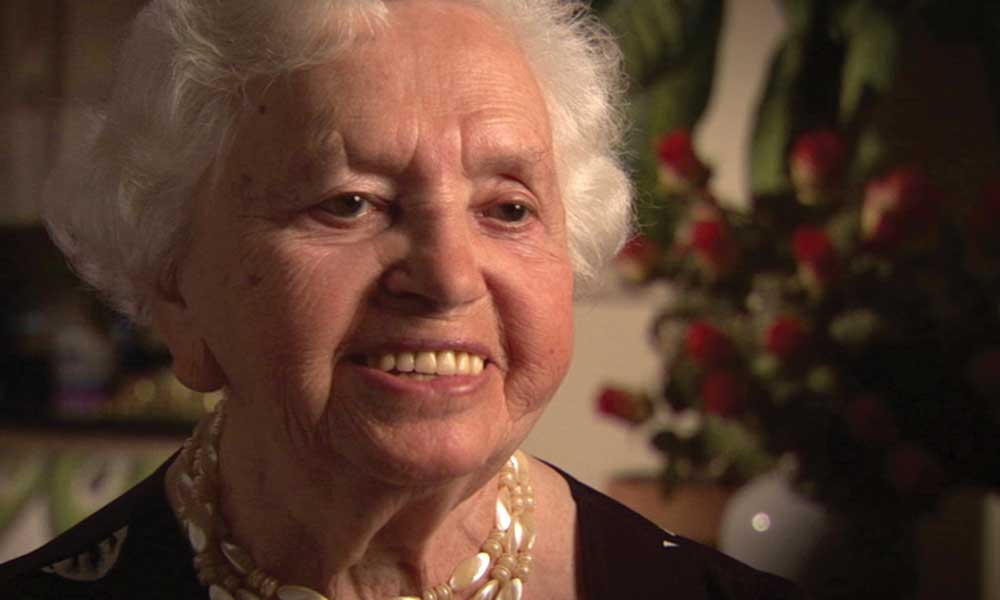
Luba Abramowitz lost her family before becoming a partisan. (Photo credit: Courtesy of New Moon Films)
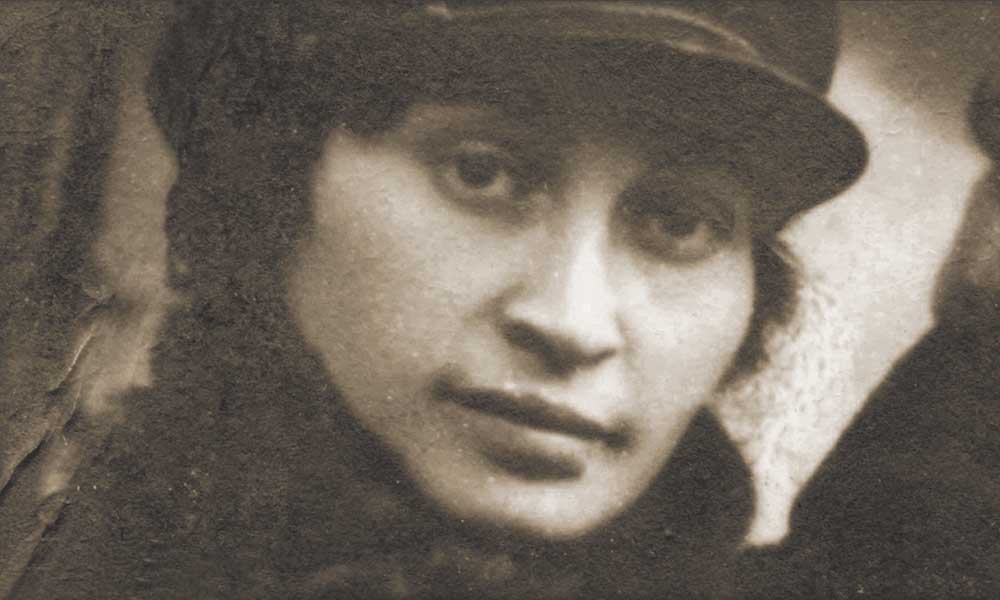
Luba Abramowitz, young. (Photo credit: Courtesy of New Moon Films)

Chayelle Porus Palevsky was 21 when she joined the Markov partisans. (Photo credit: Courtesy of New Moon Films)
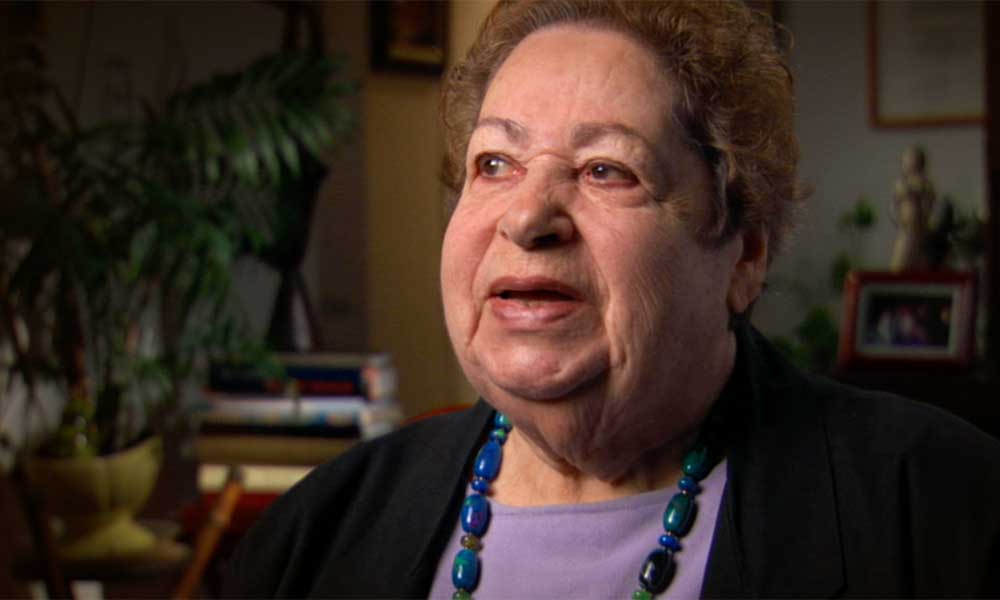
Chayelle Porus Palevsky (Photo credit: Courtesy of New Moon Films)
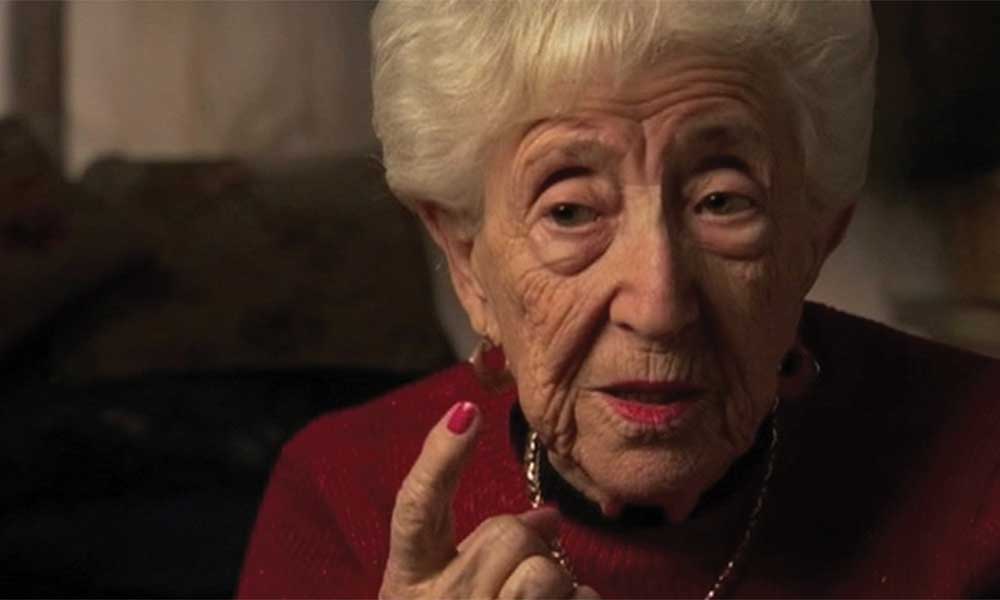
Gertrude Boyarski (Photo credit: Courtesy of New Moon Films)
 Gertrude Boyarski was just 16 when she fled to the forest. (Photo credit: Courtesy of New Moon Films)
Gertrude Boyarski was just 16 when she fled to the forest. (Photo credit: Courtesy of New Moon Films)
“It was the worst night of my life,” Gertrude relates later in the film. “My mother, sisters and little brother and I tried to make it to the woods, but collaborators found us. One of them was a boy I had gone to school with. He was my dancing partner at the prom. And I said to him, ‘Let me live, you know me, we were dancing partners.’ And he said, ‘You’re a Jew, you have to die,’ and he started shooting. My sisters and mother were killed. My little brother was still breathing, but he said, ‘If mommy is not alive, I don’t want to be alive.’ Then he fell over in the snow. He had been shot in the back of the head. I walked for a day before I found a group of partisans. My father was there, a member of the brigade.”
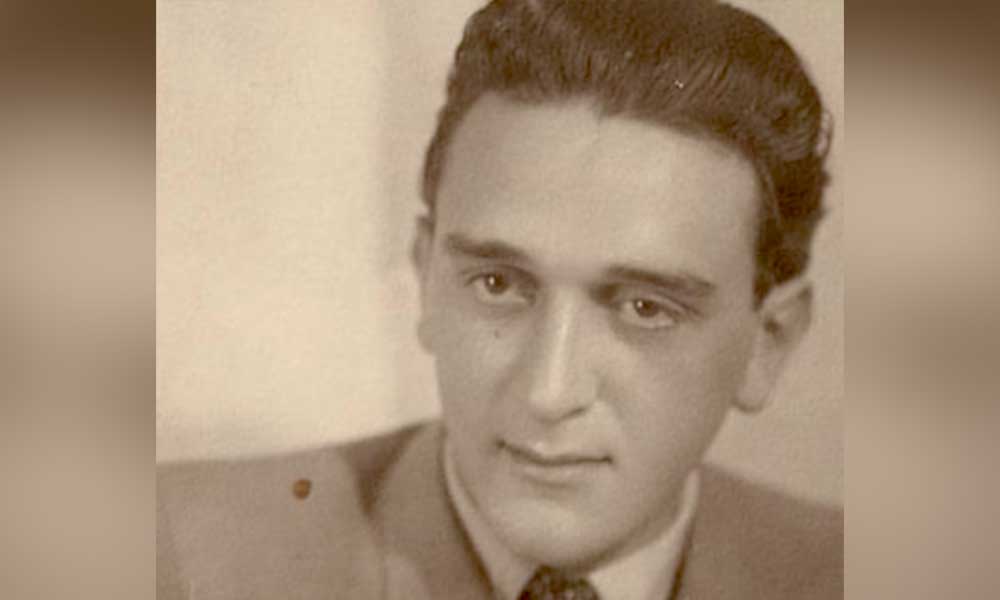
Michael as a young man. (Photo credit: Courtesy of New Moon Films)
Mintz set out to make this film, she says, “in search of an answer to my long-lasting childhood question: Why didn’t the Jews fight back? What I discovered, through the survivors’ memories, were stories of courageous and inspiring resistance—a chapter in our collective history about the Jewish partisans that needed to be told. So as a filmmaker, I worked hard to allow the partisans to tell their stories. There aren’t historians or other commentators in the film—it’s just the partisans, only them, so people can hear from those who lived it—that undeniable staring you down and really giving you their truth.”

Julia Mintz, who wrote and directed “Four Winters,” interviews Michael Stoll, the only one of the eight partisans featured in the film who is still living. Stoll, who was from the town of Lida, Poland, escaped at age 17 from a transport bound for Treblinka. Fleeing into the forest, he joined the Bielski partisan brigade, which had bases deep in the Naliboki woods. (Photo credit: Courtesy of New Moon Films)
At one point, near the end of the war, Faye Schulman went back to her village and saw the house she had been born in, which had been occupied by Nazis. Potato peels littered the floor. It was eerily quiet and she heard echoes of her family’s voices. She knew she could never live there again. “Burn it,” one of the partisans said and started to pour gas on the floor. Faye lit the match.
Afterwards, she took a picture of the burned house. The chimney was still standing. In front were three crosses marking the graves of Nazis who had died there.
Toward the end, the Russians came, says Lithuanian-born partisan Chayelle Porus Palevsky. “They took us with them to fight. We were high on survival. We could breathe our own breath. We had made it out of the woods. A miracle—we survived.” Let the next generations know, she later wrote, “that Jews fought against the Nazi machine. They did not go like sheep to the slaughter.”
Four Winters: A Story of Jewish Partisan Resistance and Bravery in WWII; directed by Julia Mintz, 2022 (96 min), a production of New Moon Films. For information visit: fourwintersfilm.com. For screening dates: https://fourwintersfilm.com/screenings.
Moment will also start sending you
our award-winning newsletters.
----------------------------------------------------------------
